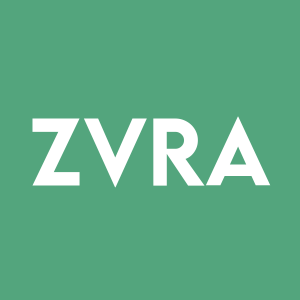NUCDF and Zevra Therapeutics Launch Check Ammonia Campaign to Highlight Critical Importance of Prompt, Accurate Blood Ammonia Testing for Diagnosing Urea Cycle Disorders
Rhea-AI Summary
The National Urea Cycle Disorders Foundation (NUCDF) and Zevra Therapeutics (NasdaqGS: ZVRA) have launched the Check Ammonia Campaign in October to improve the diagnosis of urea cycle disorders (UCDs). The campaign aims to highlight the critical importance of prompt and accurate blood ammonia testing, which is essential for detecting elevated ammonia levels (hyperammonemia), a classic sign of UCDs.
The campaign website, checkammonia.com, offers resources on recognizing and testing for hyperammonemia. Quick diagnosis is important as toxic ammonia levels can rise rapidly in affected individuals, potentially leading to coma and death if left untreated. Newborns with severe UCDs typically become critically ill within 36-48 hours after birth, and it's estimated that up to 20% of sudden infant death syndrome (SIDS) cases may be due to undiagnosed inborn errors of metabolism like UCDs.
Positive
- Zevra Therapeutics is partnering with NUCDF to raise awareness about urea cycle disorders
- The campaign aims to improve diagnosis and potentially save lives through proper blood ammonia testing
Negative
- None.
News Market Reaction 1 Alert
On the day this news was published, ZVRA gained 1.19%, reflecting a mild positive market reaction.
Data tracked by StockTitan Argus on the day of publication.
Patients, providers, and public are invited to help save lives by sharing messages and materials
PASADENA, Calif. and CELEBRATION, Fla., Oct. 09, 2024 (GLOBE NEWSWIRE) -- The National Urea Cycle Disorders Foundation (NUCDF) and Zevra Therapeutics, Inc. (NasdaqGS: ZVRA) are teaming up to launch an awareness campaign during the month of October to improve the diagnosis of urea cycle disorders (UCDs). Their goal is to highlight the critical importance of promptly checking blood ammonia levels and using proper testing techniques.
A blood ammonia test is essential to uncover elevated ammonia levels (hyperammonemia), the classic sign of a urea cycle disorder. Resources on recognizing and testing for hyperammonemia are featured on the campaign website, checkammonia.com.
Quickly diagnosing UCDs is critical. Toxic ammonia levels can rise rapidly in affected individuals, which if left untreated, can cause coma and death.
Newborns with severe UCDs typically become catastrophically ill within 36-48 hours after birth. It is estimated that up to
The campaign’s primary message is that a blood ammonia test, performed promptly and properly, can save lives. Downloadable campaign resources focus on (1) Recognizing the signs of UCDs and promptly ordering a test and (2) Following proper test procedures.
About Urea Cycle Disorders
A urea cycle disorder is caused by a genetic mutation—a change in a person’s genes—that leads to a deficiency of one of the enzymes needed to metabolize protein. These missing or reduced enzymes make the process less efficient, allowing ammonia to build up in the bloodstream. High ammonia levels are toxic to the brain, causing a range of physical, neurological, and behavioral symptoms.
UCDs can strike at any age. Those with more severe UCDs (greater enzyme deficiency) typically become symptomatic very shortly after birth. Those with less severe UCDs (less enzyme deficiency) can develop symptoms at any time later in life.
Signs of UCDs
The Check Ammonia campaign website highlights the early signs of hyperammonemia in newborns and in infants, children, and adults that should prompt a blood ammonia test. Key warning signs include:
- Newborns from 1 to 28 days old: poor feeding or vomiting, hypotonia (poor muscle tone or floppiness), lethargy (difficult to wake up), respiratory distress, seizures, or coma.
- Older infants and children: inconsolable crying, agitation, or hyperactive behavior sometimes accompanied by screaming, self-injurious behavior, and refusal to eat meat or other high-protein foods. Later symptoms may include frequent episodes of vomiting, especially following high-protein meals, lethargy and delirium. Older children may be referred to child psychologists because of their behavior, developmental delays, and eating problems.
- Adults with high blood ammonia levels: disorientation, confusion, slurred speech, unusual and extreme combativeness or agitation, stroke-like symptoms, lethargy and delirium. Many may be seen by neurologists or psychiatrists because of psychiatric symptoms, including schizophrenia and bipolar disorder.
Who should get tested?
Routine ammonia checks aren’t necessary for everyone, but the test is crucial for those experiencing symptoms that could be high ammonia.
How is high ammonia treated?
Once identified, high ammonia levels can be managed and treated in several ways. These treatments may include medications, dietary changes including protein restriction, managing underlying conditions, or hospitalization in more severe cases, especially if neurological symptoms are present.
Join the Campaign
Patients, providers, and the public are invited to help share the campaign’s messages and materials widely. For electronic copies of campaign materials, visit checkammonia.com. Contact info@nucdf.org with questions or to request hard copies you can deliver to pediatricians, hospitals, emergency rooms, and other healthcare providers in your area. Follow the NUCDF’s social media sites (Facebook, LinkedIn, Instagram and YouTube) to share materials throughout the month.
Learn more and hear patient stories:
Watch a video on recognizing the signs of urea cycle disorders.
Read about Jennings, an infant who passed away three days after he was born due to an undiagnosed UCD.
Hear about Zoey, a 19-year-old girl who lost her life suddenly at age 19 from an undiagnosed urea cycle disorder.
Read about Jim Stavas, a fireman who fell into a coma and died after sinus surgery due to an undiagnosed UCD (under “Why we ride”).
About the National Urea Cycle Disorders Foundation: NUCDF is a nonprofit organization dedicated to saving and improving the lives of children and adults affected by urea cycle disorders (UCDs) and raising awareness since 1988. Led exclusively by patients and families affected by UCDs, we are the driving force behind critical research to improve the understanding and management of UCDs, find new treatments, and ultimately a cure. NUCDF serves as a lifeline to patients, families, and medical professionals worldwide seeking information, support, and hope. Visit www.nucdf.org or email info@nucdf.org.
About Zevra Therapeutics:
Zevra Therapeutics, Inc. is a commercial-stage rare disease company combining science, data, and patient needs to create transformational therapies for diseases with limited or no treatment options. Our mission is to bring life-changing therapeutics to people living with rare diseases. With unique, data-driven development and commercialization strategies, the Company is overcoming complex drug development challenges to make new therapies available to the rare disease community.
For more information, please visit www.zevra.com or follow us on X (formerly Twitter) and LinkedIn.
Caution Concerning Forward-Looking Statements:
This press release may contain forward-looking statements within the meaning of the Private Securities Litigation Reform Act of 1995. Forward-looking statements include all statements that do not relate solely to historical or current facts, including without limitation statements regarding upcoming events or Zevra’s participation at such events. Forward-looking statements are based on information currently available to Zevra and its current plans or expectations. They are subject to several known and unknown uncertainties, risks, and other important factors that may cause our actual results, performance, or achievements to be materially different from any future results, performance, or achievements expressed or implied by the forward-looking statements. These and other important factors are described in detail in the "Risk Factors" section of Zevra’s Annual Report on Form 10-K for the year ended December 31, 2023, Zevra’s Quarterly Report for the quarter ended June 30, 2024, and Zevra’s other filings with the Securities and Exchange Commission. While we may elect to update such forward-looking3 statements at some point in the future, except as required by law, we disclaim any obligation to do so, even if subsequent events cause our views to change. Although we believe the expectations reflected in such forward-looking statements are reasonable, we cannot assure that such expectations will prove correct. These forward-looking statements should not be relied upon as representing our views as of any date after the date of this press release.
NUCDF Contact
Jill Williams, 513-288-1509, jwilliams@nucdf.org
Zevra Contact
Nichol Ochsner, +1 (732) 754-2545, nochsner@zevra.com









